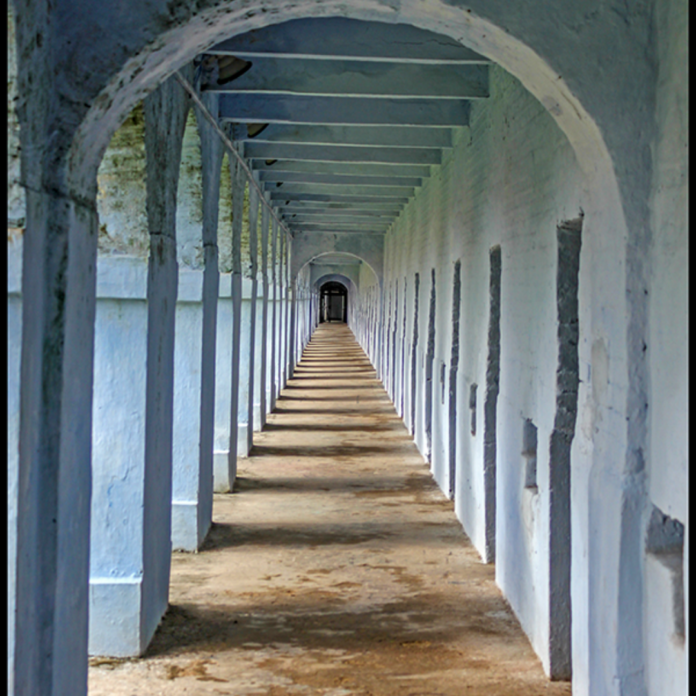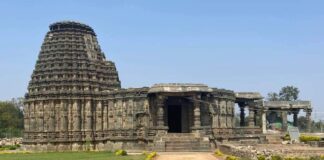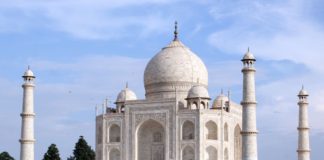Travel is the lungs of our health. After long days, months or even years of monotonous daily routine, travel acts as a refresher and boosts up all our energy levels. It takes us away from the mundane arena into the world of heaven and lords. But, just like every house is not a home, in the same way, any place or monument can never be worth visiting, in the absence of its rich and unique heritage.
The cellular jail, infamously known as, “The Kala Pani” in Andaman and Nicobar islands silently speaks to the traveller a story, amalgamated with India’s freedom struggle. It is a mute spectator to the Indian independence movement. It is a place, where the most merciless man, would even get naturally deeply engrossed in the rich history of those people behind the walls and bars during the era of colonialism. A place, where you could feel as if the pain endured by the people back in the colonial era is still chained here. A place, where great freedom fighters like Veer Savarkar, and Yogendra Shukla sang their songs of revolt. A place, whose each brick has got a heart-rending story of resistance and suffering. One might wonder, why is it infamous as Kala Pani? Currently, if anyone travels over there, he would get to know that many developments and buildings are picking up. But, actually, at the time when it was constructed and used as a jail, it was surrounded by sea from all three sides, in such a fashion, that no prisoner could escape from there. So, it came to be known as “Kala”, referring to the barbaric treatment inside the jail and “Pani”, as the jail was surrounded from all sides by the sea. After entering the jail, one would realise that the jail is shaped like an octopus. A tower is built in the middle of the prison. This tower was the watchtower, where only the watchman could enter.
If you climb up the stairs of the watchtower and go up, then you would understand that it was positioned in such a manner, that every cell of the jail was visible. So, that any prisoner doesn’t perform any nuisance. After walking a while, you would see a workhouse there, where the prisoners were forced to do oil extraction, rope making, coconut peeling etc. When you enter anyone’s cell, then you would realise that it was designed in such a way, that a prisoner of one cell could not have any contact with a prisoner of the other cell. The cell, where Veer Savarkar lived is remarked and worshipped today.
The best thing you would see there is that inside the jail, there is a blackboard, where the names of political prisoners are written in white ink. You would see that there were not only people from a particular caste, language, religion, state or anything like that. But, you would be able to feel the political integrity of India, which made people from every place irrespective of language, state etc. etc. enthusiastically participate towards the same goal-“ to wipe out the British”.
The consequence of this political integrity can be felt even now also. In the streets of Port Blair, you would not listen to Tamils, Bengalis and Punjabis communicating in their language, rather they have made a common language for communication that is, Hindi. This is because these Tamils, Bengalis etc are the generations of those prisoners who decided to settle over there. But, the essence of your whole trip would be the evening light and sound show. In which, they will make the past etched in those walls of freedom struggle, an open secret, at an ambling pace. In this show, a peepal tree would be personified as time by film actor, Ompuri’s voice. This peepal tree is very old. It is there since the jail’s construction started.
Only during the 2004 tsunami, was it had got uprooted. But, it regrew again to the same size. So, the peepal tree becomes the narrator as the only eyewitness to the bestial act. The narration starts with the tree stating that there the most arrogant jailer was Mr Barry, to defy him meant to entertain death. The tree takes us back into the colonial era and tells us the cruel atrocities, the prisoners suffered after doing the hunger strike. It quoth us that they made Mahavir Singh, Mohan Kishore Namadas and Mohit Moitra drink milk through their nose with the help of a ‘rod’. They stabbed iron rods inside their nose and their eyes popped out. The tree says that it breaks its heart to say that it still has those days fresh in its mind. It had listened to the wailings of Veer Savarkar and their plans for gaining freedom. It says that pain in the air gave goosebumps to its barks even. At last, the cords of affection, one would feel for those prisoners of pasts couldn’t be easily cut off. So, this was the story of Cellular Jail.
Some people say that God is there whereas some people say that no God is there and they are merely idols created by human beings. But, one truth is that the history of temples is the one that exists behind them.
So, now moving to the religious epitome of India, let us travel to eastern India, where Lord Jagannath’s shrine, one of the char dhams is there. Beautifully constructed about 2000 years ago, with old architecture, the Jagannath temple is still worshipped. In the entrance, there stands the Barun stambha. There is a total of 22 steps. Inside the garbhagriha (Sanctum Sanctorum) of the temple, the three deities, Lord Jagannath, Lord Balabhadra and Lord Subhadra sit on their ‘Ratnavedi’ (Throne of Pearls). One would see that there is a Nila Chakra mounted on the top Shikhara of the temple. As a custom, for thousands of thousands of years, every day a different flag is waved on the Nila Chakra.
And this flag must be yellow, orange or red. This flag is locally known as, “Patita Pavana”. There is also a Natamandapa or Nata Mandir, locally known as Jagamohan (Audience Hall). The main part of the temple, which most of the tourists enjoy is the Bhoga Mandapa and Ananda Bajara, an open food market inside the temple. It comprises “Abhada and Mahaprasad”.
Now, let us go again to the home of rich heritage and ancient culture, embedded with scenic heart-wrenching beauties and welcoming hearts- the state of Odisha.
Here’s the tale of the famous, “Black Pagoda”, the sun temple at Konark in Odisha. It has carved wheels that are used to serve as sundials. The unique thing to see there is that one can witness three images of Sun God in three directions to catch the rays of the sun at dawn, noon and sunset. It is constructed in such a fashion, that there is no shadow of the temple at any time of the day. This was the uniqueness of the architecture of the Black Pagoda.
The beauty of nature has no end. The more you look into it, the newer and prettier it becomes. A limitless expansion…….
The same style of limitless beauty is presented by the Kaziranga National Park located in the gateway of the northeastern state – Assam. In the lap of tropical evergreen forests, Kaziranga presents an exceptional refreshment. The best month to visit Kaziranga is March. March is the month when spring has already stepped in most of the Indian states. But, here the case is quite different, as here there is still winter. The best thing to do there is to rise in the early morning and go for an elephant ride. When on an elephant ride, you would see a fantabulous sight.
Riding on a giant elephant, the golden rays of the sun would fall on you as if they are not only sun rays but, rays of rejuvenation and a path to heaven. Then, you would meet with a one-horned rhino, special to only Northeast India. And one part during the ride would be, you would see a herd of deer with golden furs running on green grasses as if they aren’t deer, but angels. Wow! How beautiful the scene would be! It’s beyond imagination. The elephant ride would be an unforgettable moment in your book of life!
Now, let us again move into nature’s odyssey.
On this trip to Manas National Park, one would have to do a jeep ride. On the jeep ride, you would see one-horned rhino, golden langur, elephants and tigers. Also, you would be able to listen to the beautiful song of the birds like the hornbill. But, the best part of this trip would be seeing the blue bed of pearls. This blue bed of pearls act as an international border between India and Bhutan. This blue bed of pearls is none other than the Manas river. It is so pure and clean that one would be able to see its transparency with eyes.
You could see stones deep inside the river from far away. The location is like the Manas river is between two National Parks- on one bank, Manas National Park in India and on the other bank, there is Royal Manas National Park in Bhutan. The feeling there is awesome and worth memorising. The sun’s rays fall slantingly on the river and from far the river looks pristine crystal clear and blue. This is the tale of Manas National Park and its pearl enriched river.
We call it a day with this. After travelling all across the world, country, state and city, the most beautiful place which you will feel internally is your own home, which is under the shadow of your loving family.










